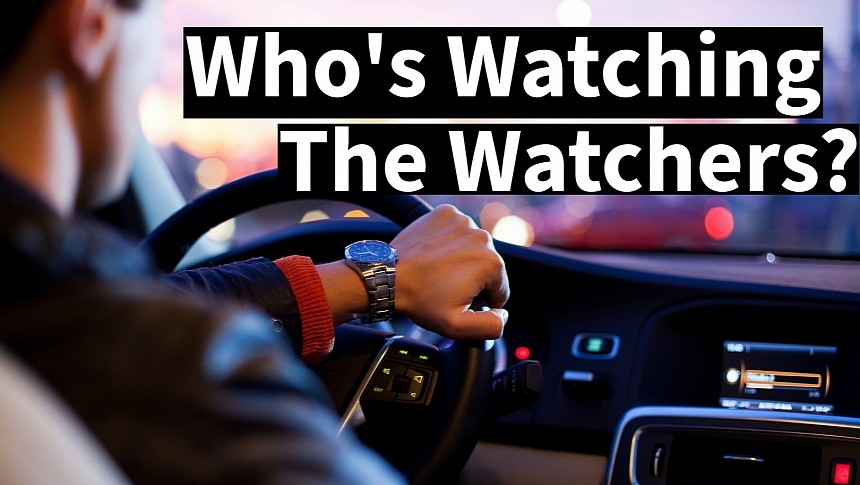When it comes to buying either a brand-new car or a used one, a lot of people rely on these so-called Blue Book valuations perhaps a lot more than they should. Yes, they can be very useful in certain cases, but also equally misleading when talking about your car ownership experience as a whole.
The problem with ‘value’ in general is that it does not represent a fixed point. It always fluctuates, and worst of all, it varies. You know that old saying, one man’s trash is another man’s treasure. Put a Blue Book value on that trash and you can get a few more people to agree regarding its worth, but ultimately, it’s still either trash or treasure, if you catch my meaning.
So, what is a Blue Book, or Value Book as some might say? It basically serves to give you a general idea of what other buyers paid for the same make, model and year vehicle you’re looking for, with comparable mileage. It’s supposed to help you understand if you’re either overspending or if you’re getting a bargain, although the latter rarely happens nowadays (more on bubble prices later).
Aside from the vehicle itself, Blue Book value also includes trade-in factors, retail value, CPO value (certified pre-owned), and it can be applied not just to automobiles, but motorcycles, RVs, snowmobiles, you name it.
It’s straightforward on the surface, and I’m not going to pretend it should be ignored, because it shouldn’t. Where problems may arise is once you begin messing with anticipated costs, which value books also tend to take into consideration. We’re talking factors such as fuel consumption, repair costs, financing, insurance costs and even depreciation.
Basically, their idea of fair value is to figure out what other consumers tend to pay for a certain vehicle, before adjusting the prices based on region or various market conditions. That information then reaches you (our main protagonist, let’s say), serving as blueprint of sorts when it comes down to making your decision.
Now, there are other value book operators out here in North America, but they work on similar principles, so there’s little else we could learn from them that we couldn’t learn from KBB.
Carfax are known for offering vehicle history reports, providing information regarding the number of owners, accidents, title issues, maintenance history and so on. They claim to have access to over 30 billion records, including motor vehicle departments for all 50 U.S. states, plus 10 Canadian provinces.
With their help, you could find out if that used BMW you’ve had your eye on was ever involved in a salvage auction, despite looking brand-new.
Should you only rely on your Carfax report when buying a used car? Certainly not, because not all accidents are disclosed to them, but such a report will give you more information about the actual vehicle you intend to purchase than any value book out there.
Be thankful you’re not in Europe right now, where used premium cars are just as expensive now as they were 4 years ago.
Anyway, whether it has burst or not, the very existence of a bubble sort of invalidates the use for value books to some extent, at least temporarily. I can tell you from personal experience that looking for a used car in the past three or so years has not been a pleasant experience. It’s actually been a little frustrating, and I can understand how confusing it would be for buyers with little or no industry experience.
So, who should you trust? If you’re an MSRP shark, my first instinct would be to say trust your favorite car reviewer, but keep in mind that a lot of the products they review are kind of the same, and car journalists (I should know) tend to overuse superlatives, while recycling their impressions from one reasonably priced car to the next.
That’s sort of the problem, because... what is reasonably priced? After nearly two decades working in this industry, I’ve come to realize that most of it is just “marketing talk”, and most cars are just overpriced and mediocre.
Basically, anything you can buy new for between $20,000 and $30,000 is more or less the same product, but with different styling, different badges and a different powertrain. Anything that’s budget-oriented is pretty much an “A to B” mobile. Simple as that. What, you think there’s a life changing difference between the 2024 Toyota Corolla and 2024 Honda Civic? No. And yet, the marketing people will have you believe that these are two completely different products just because they’re from two different brands.
Meanwhile, industry experts will convince you they’re different because they ride on different architectures, handle differently, and have different features and so on. In reality, the differences are skin deep, and the key word is “slightly”. They drive more or less the same, and so do most cars where the R&D budget isn’t particularly focused on certain areas.
Ultimately, the best way to arrive at your ideal car, or at least one that will satisfy most if not all your needs, is by taking the same approach you would while researching a new desktop monitor or smartphone – read/watch the reviews, read the comments, settle on a specific model, look for it online, get a Carfax report, and you’re pretty much done. The vehicle’s blue book value should be the last thing on your mind.
Having said all that, the one problem I have with a lot of car reviews out there is the fact that people are still hung up on how we used to judge cars back in the mid 2000s. That’s when most of today’s automotive journalists started catching the bug, undoubtedly inspired by BBC’s Top Gear and their incredible success.
I can tell you first-hand what happened next. All 3 Series rivals were expected to be as sporty as the 3 Series. All Focus rivals the same, and so on. We held all cars to the highest possible standards, and not for good reason, but rather because no family car or hatchback was worth your time if it didn’t handle as great as the very best that particular segment had to offer.
I’m sure you can understand just how ridiculous that is, and it’s something that still goes on today. Reviewers will talk to you about how the new Kia whatevertheheck handles in tight corners, and how much steering feel it’s got, and whether it oversteers or understeers – they do this with $25,000 budget-friendly cars and it’s utter nonsense.
If you’re in a position to learn whether your budget-friendly compact SUV understeers or oversteers, you’re doing something wrong. Nowadays cars are incredibly safe stability-wise, and you just need to trust the electronic systems while doing your best to drive carefully.
Yes, you should care about the handling and the dynamics of a vehicle when you’re in the market for a BMW M3, but not a Toyota RAV4. Rant over.
Moral value works pretty much the same as a value book but with a slight twist. It can be defined by a set of guidelines that assist you in deciding what’s right and what’s wrong for you. However, where value books will tell you how a certain vehicle compares to its rivals from a financial standpoint, that same vehicle’s moral value is determined by how it compares to its rivals from every single point of view.
The fact of the matter is that some cars are simply not worth buying due to their superior segment rivals. I know you’re just dying for an example, and I suppose I could think of one, but for the record, no matter what I say, it’s still going to upset certain people.
One car that I consider having an extremely low moral value is the Lexus ES. Whether new or used, it’s just a Toyota Avalon in fancy attire (and not all that fancy, it still looks like a Toyota). Yet some people might purchase it unaware of just how inferior of a product it is to any comparable European rival. The powertrains are inferior, the interior quality isn’t as nice (although not bad overall), it’s not as nice to drive... it just fails in every category when you compare it to just about anything else with a premium badge.
Yet, one might look at the blue book value on a 2023 ES and think “wow, this is a really good deal I’m getting”. Except it’s not. Because the blue book value doesn’t take any vehicle fundamentals into account.
You’re not going to care about anything blue book related while driving to work in your car after 2-3 years of ownership. You’re just not. What matters is how the car makes you feel, and whether you love how it looks, or how it drives, or preferably both. Even reliability takes a backseat to some extent, because rarely do worst-case fright night scenarios happen.
A lot of people buy new cars because they’re afraid of not being able to afford to fix a used one in case something goes wrong. That’s more or less an irrational fear, because you end up paying way more for a new car than what it would have cost you to buy a used one, plus whatever maintenance costs you might have.
For new cars to make perfect sense in this argument, something would have to go so wrong with the used one, that fixing it would cost close to whatever money you ended up saving to begin with – this almost never happens.
In conclusion, buy whatever car you want, regardless of blue book valuations. Just make sure there’s some moral value to it, and you’re not leaving “too much car” on the table. On the other hand, if you happen to own a used car lot, then of course those value books will prove... valuable. Pun intended.
So, what is a Blue Book, or Value Book as some might say? It basically serves to give you a general idea of what other buyers paid for the same make, model and year vehicle you’re looking for, with comparable mileage. It’s supposed to help you understand if you’re either overspending or if you’re getting a bargain, although the latter rarely happens nowadays (more on bubble prices later).
Aside from the vehicle itself, Blue Book value also includes trade-in factors, retail value, CPO value (certified pre-owned), and it can be applied not just to automobiles, but motorcycles, RVs, snowmobiles, you name it.
It’s straightforward on the surface, and I’m not going to pretend it should be ignored, because it shouldn’t. Where problems may arise is once you begin messing with anticipated costs, which value books also tend to take into consideration. We’re talking factors such as fuel consumption, repair costs, financing, insurance costs and even depreciation.
Who do we listen to?
Unless you’ve been living under the rock, you probably get your blue book info from Kelley Blue Book, an industry titan formed all the way back in 1926. They began offering tips and pricing info online in 1995 – so yeah, they’ve been doing this for a while now, and they’re pretty good at it. They have their own proprietary algorithm for analyzing pricing and historical trends, while taking into account factors such as time of year and location.Basically, their idea of fair value is to figure out what other consumers tend to pay for a certain vehicle, before adjusting the prices based on region or various market conditions. That information then reaches you (our main protagonist, let’s say), serving as blueprint of sorts when it comes down to making your decision.
Now, there are other value book operators out here in North America, but they work on similar principles, so there’s little else we could learn from them that we couldn’t learn from KBB.
Carfax
If you’re in the market for a used car, one could argue that you should focus more on information provided to you by the likes of Carfax rather than any value book. The ownership experience is rarely influenced by how good a deal you get – but rather by the visual and mechanical state of the vehicle you’re purchasing.Carfax are known for offering vehicle history reports, providing information regarding the number of owners, accidents, title issues, maintenance history and so on. They claim to have access to over 30 billion records, including motor vehicle departments for all 50 U.S. states, plus 10 Canadian provinces.
With their help, you could find out if that used BMW you’ve had your eye on was ever involved in a salvage auction, despite looking brand-new.
Should you only rely on your Carfax report when buying a used car? Certainly not, because not all accidents are disclosed to them, but such a report will give you more information about the actual vehicle you intend to purchase than any value book out there.
Bubble prices
It’s a well-known fact that the COVID pandemic, coupled with the chip shortage caused a surge in car prices, both for new and used models, ironically. Since then, various economists and research companies kept claiming the bubble just burst (it burst like 12 times since last year), but in reality, it mostly just deflated, and it really depends on where you live.Anyway, whether it has burst or not, the very existence of a bubble sort of invalidates the use for value books to some extent, at least temporarily. I can tell you from personal experience that looking for a used car in the past three or so years has not been a pleasant experience. It’s actually been a little frustrating, and I can understand how confusing it would be for buyers with little or no industry experience.
Beware of the noise
Analyzing trends when it comes to used cars can be a double-edged sword, and putting your trust in the people who are trying to sell you a product is a little like putting your trust in every so-called crypto analyst on YouTube that promises his followers good returns on investment.So, who should you trust? If you’re an MSRP shark, my first instinct would be to say trust your favorite car reviewer, but keep in mind that a lot of the products they review are kind of the same, and car journalists (I should know) tend to overuse superlatives, while recycling their impressions from one reasonably priced car to the next.
That’s sort of the problem, because... what is reasonably priced? After nearly two decades working in this industry, I’ve come to realize that most of it is just “marketing talk”, and most cars are just overpriced and mediocre.
Basically, anything you can buy new for between $20,000 and $30,000 is more or less the same product, but with different styling, different badges and a different powertrain. Anything that’s budget-oriented is pretty much an “A to B” mobile. Simple as that. What, you think there’s a life changing difference between the 2024 Toyota Corolla and 2024 Honda Civic? No. And yet, the marketing people will have you believe that these are two completely different products just because they’re from two different brands.
Meanwhile, industry experts will convince you they’re different because they ride on different architectures, handle differently, and have different features and so on. In reality, the differences are skin deep, and the key word is “slightly”. They drive more or less the same, and so do most cars where the R&D budget isn’t particularly focused on certain areas.
Ultimately, the best way to arrive at your ideal car, or at least one that will satisfy most if not all your needs, is by taking the same approach you would while researching a new desktop monitor or smartphone – read/watch the reviews, read the comments, settle on a specific model, look for it online, get a Carfax report, and you’re pretty much done. The vehicle’s blue book value should be the last thing on your mind.
Having said all that, the one problem I have with a lot of car reviews out there is the fact that people are still hung up on how we used to judge cars back in the mid 2000s. That’s when most of today’s automotive journalists started catching the bug, undoubtedly inspired by BBC’s Top Gear and their incredible success.
I’m sure you can understand just how ridiculous that is, and it’s something that still goes on today. Reviewers will talk to you about how the new Kia whatevertheheck handles in tight corners, and how much steering feel it’s got, and whether it oversteers or understeers – they do this with $25,000 budget-friendly cars and it’s utter nonsense.
If you’re in a position to learn whether your budget-friendly compact SUV understeers or oversteers, you’re doing something wrong. Nowadays cars are incredibly safe stability-wise, and you just need to trust the electronic systems while doing your best to drive carefully.
Yes, you should care about the handling and the dynamics of a vehicle when you’re in the market for a BMW M3, but not a Toyota RAV4. Rant over.
Value books vs. Moral value
The true value of an item can only be gauged from within, and since sentimental value is out of the question (unless you already owned the car you’re looking for and you just want to replace it because it meant a lot to you), the only thing left that matters is moral value.Moral value works pretty much the same as a value book but with a slight twist. It can be defined by a set of guidelines that assist you in deciding what’s right and what’s wrong for you. However, where value books will tell you how a certain vehicle compares to its rivals from a financial standpoint, that same vehicle’s moral value is determined by how it compares to its rivals from every single point of view.
The fact of the matter is that some cars are simply not worth buying due to their superior segment rivals. I know you’re just dying for an example, and I suppose I could think of one, but for the record, no matter what I say, it’s still going to upset certain people.
One car that I consider having an extremely low moral value is the Lexus ES. Whether new or used, it’s just a Toyota Avalon in fancy attire (and not all that fancy, it still looks like a Toyota). Yet some people might purchase it unaware of just how inferior of a product it is to any comparable European rival. The powertrains are inferior, the interior quality isn’t as nice (although not bad overall), it’s not as nice to drive... it just fails in every category when you compare it to just about anything else with a premium badge.
Yet, one might look at the blue book value on a 2023 ES and think “wow, this is a really good deal I’m getting”. Except it’s not. Because the blue book value doesn’t take any vehicle fundamentals into account.
How do I find the right car for me?
I already touched on some of the steps you can take in order to find a good car, with a high moral value. But you’re the only one who knows what the right car for you is. Yet another truth that so many industry experts tend to ignore.A lot of people buy new cars because they’re afraid of not being able to afford to fix a used one in case something goes wrong. That’s more or less an irrational fear, because you end up paying way more for a new car than what it would have cost you to buy a used one, plus whatever maintenance costs you might have.
For new cars to make perfect sense in this argument, something would have to go so wrong with the used one, that fixing it would cost close to whatever money you ended up saving to begin with – this almost never happens.
In conclusion, buy whatever car you want, regardless of blue book valuations. Just make sure there’s some moral value to it, and you’re not leaving “too much car” on the table. On the other hand, if you happen to own a used car lot, then of course those value books will prove... valuable. Pun intended.










